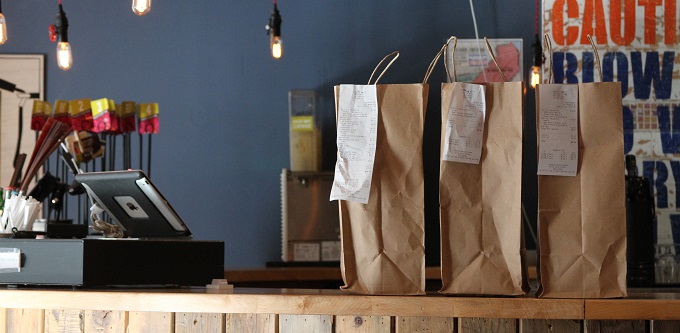
Meal delivery platforms are gearing up for another bumper year as more and more Aussies begin to use their smartphones to order everything from veggie burgers to hard booze.
That’s according to the economists over at IBISWorld, who have pulled together some new modelling that predicts the meteoric rise of UberEats, Deliveroo and Menulog will continue in 2019-20 as a wider demographic of Australians turns towards the services.
The online food ordering and meal delivery platform industry is expected to increase in size by more than 25% in 2019-20, IBISWorld says; meanwhile the broader restaurant industry will crawl along at about 1% growth.
The research — published Tuesday alongside several other “fly and fall” industry predictions — provides a quantitative backdrop to a story many independent restaurant owners are all too familiar with: an ongoing reckoning in their industry, they say, driven in large part by meal delivery platforms and their runaway popularity.
IBISWorld analyst James Caldwell tells SmartCompany that popularity shows no signs of slowing down anytime soon, with widespread adoption among millennials now bleeding over into older generations.
“We’re seeing a lot more older people getting comfortable with the technology, but they still represent a small share of the market,” Caldwell says.
While meal delivery platforms have provided a basis for many small business owners to attract new customers, high commission rates, tight turnaround times and, in some cases, unfair trading practices have emerged as the thorn in the side of restaurants trying to modernise their businesses.
A recent survey of 457 hospitality business owners undertaken by industry finance firm SilverChef found three in five believe the proliferation of meal delivery has eaten into their profits, while about 25% say they’re decreasing their reliance on third-party apps.
“Acquiring and retaining customers has never been more challenging for the food service industry as consumer expectations, societal shifts and advancing technology continue to fundamentally shift what, how and where we eat and drink,” Silverchef’s executive general manager Scott Niclai said of the findings.
The multinational operators behind UberEats, Deliveroo and Menulog in Australia are fast expanding both the scope of their delivery networks and their product stables, with partners as far flung as Hoyts and Coles now trading on services once reserved for pizza and burgers.
The SilverChef research, which also pulled insights from a YouGov panel of about 1,000 Aussies, presented expectations of meal customisation and an overwhelming desire among customers for internet-enabled dining experiences as the keys to modern consumer demand.
While meal delivery is expected to have another strong year, IBISWorld is predicting the industry to mature in Australia before long, which will temper growth rates.
While the industry has grown at about 76% each year over the last five years, IBISWorld expects growth to slow to an annualised rate of about 10% by 2024.
“We’re seeing that growth rate start to slow,” Caldwell says.
IBISWorld’s “fly and fall” industries of 2019-20
The high flyers (revenue growth 2019-20)
- National Disability Insurance Scheme providers, a $13 billion industry slated to rise 33.3%;
- Online food ordering and delivery platforms, a $690 million industry, slated to rise 26.5%;
- Solar electricity generation, a $583 million industry, slated to rise 16.5%;
- IT security consulting, a $4.5 billion industry slated to rise 14.3%; and
- Pig farming, a $999 million industry slated to rise 13.9%.
The falls (revenue shrink 2019-20)
- Cotton ginning, a $3.16 billion industry predicted to fall 61.4%;
- Diamond and gemstone mining, a $720 million industry to fall 46.1%;
- Electricity retailing, a $46.5 billion industry slated to fall 12.8%;
- Multi-unit apartment and townhouse construction, a $54 billion industry slated to fall 10.3%; and
- Aluminium smelting, a $5.2 billion industry slated to fall 10.1%.


COMMENTS
SmartCompany is committed to hosting lively discussions. Help us keep the conversation useful, interesting and welcoming. We aim to publish comments quickly in the interest of promoting robust conversation, but we’re a small team and we deploy filters to protect against legal risk. Occasionally your comment may be held up while it is being reviewed, but we’re working as fast as we can to keep the conversation rolling.
The SmartCompany comment section is members-only content. Please subscribe to leave a comment.
The SmartCompany comment section is members-only content. Please login to leave a comment.